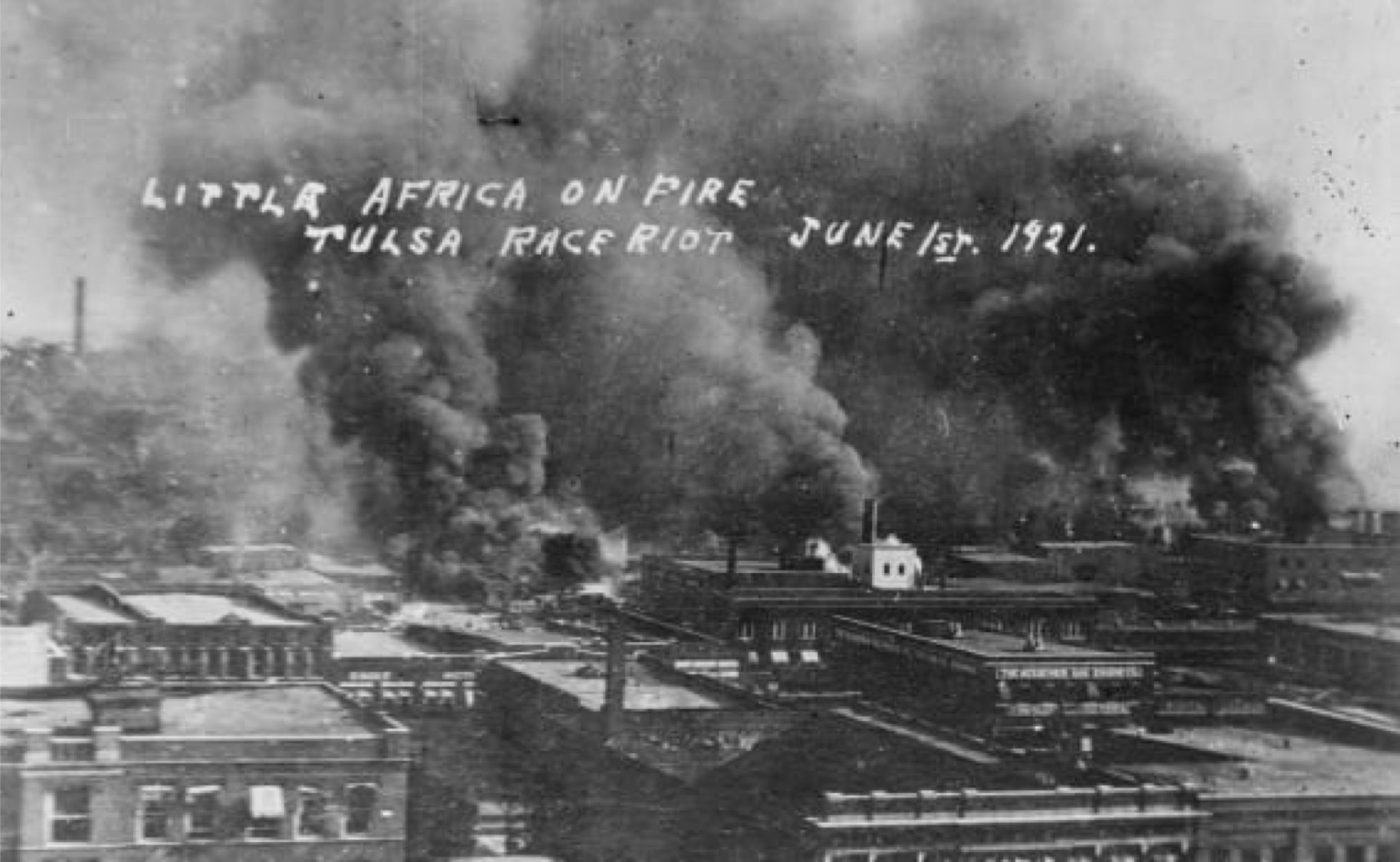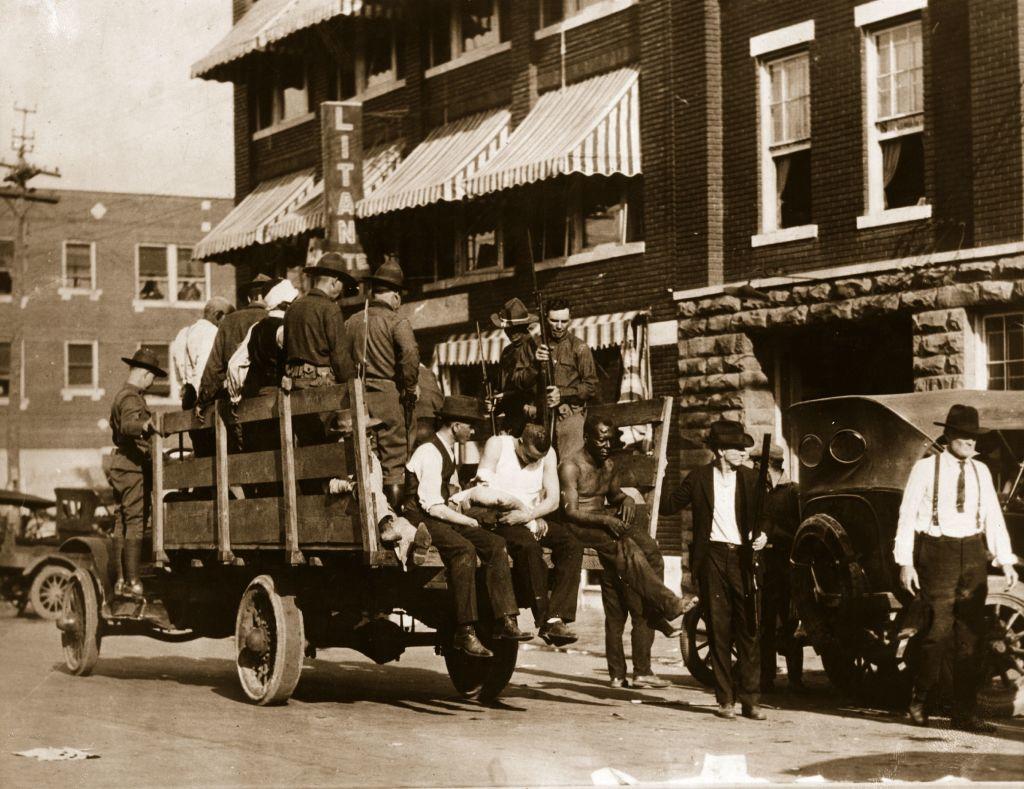
The Tulsa Massacre, later called the Tulsa race riot of 1921, is when white residents massacred hundreds of black residents and torched the "Black Wallstreet" neighborhood within hours. The riot was one of the most devastating massacres in the history of U.S. race relations, destroying the once thriving Greenwood community.
Black Wallstreet was home to hundreds of Black owned businesses like drugstores, movie theaters, hotels and more.
Many say the massacre started when a young, Black man, who was getting off the elevator, tripped and grabbed hold of a white woman to keep his balance.

About 10,000 blacks were left homeless, and property damage amounted to more than $1.5 million in real estate and $750,000 in personal property ($30 million in 2017).
The only three known living survivors of the deadliest racist attack in American history are awaiting a court’s crucial decision in a lengthy legal battle more than a century in the making.
Two years ago – on the eve of the 100th anniversary of a brutal two-day attack in a once-thriving Black neighbourhood in Tulsa, Oklahoma – a lawsuit against the city, military officials and other institutions demanded justice for the families and community living in the long, violent shadow of a massacre that left as many as 300 Black people dead and thousands homeless.
On 31 May, 1921, a white mob supported by law enforcement and city officials launched one the bloodiest episodes of racist violence in the 20th century – one in which no one has ever been criminally charged.
Now, 102 years later, a lawsuit from Viola Fletcher, Hughes Van Ellis and Lessie Benningfield Randle – who were all small children during the attack – aims to correct the record about the Tulsa race massacre and establish a fund for survivors and their descendants.
On 10 May, survivors returned to a Tulsa courtroom for a hearing on whether their case against the city and state can continue, after several attempts from defendants to dismiss the case. Ms Fletcher turned 109 years old that day. A decision from Judge Caroline Wall is imminently expected.
“Despite the indisputable facts about the Tulsa race massacre and the ongoing generational damage that it caused, there has not been any constructive, tangible action taken to address and repair its catastrophic harm,” according to a statement from attorney Sara Solfanelli with Schulte Roth & Zabel. “There is a path to justice through the legal system and this lawsuit, and it’s a real opportunity for the survivors to see that justice in their lifetimes.”
Researchers at the University of Oklahoma believe they’ve uncovered a mass grave site from this nightmare-ish massacre.
Scott Hammerstedt, a senior researcher for the Oklahoma Archeological Survey, said at a public hearing Monday that a geophysical scanning in October identified a 25-by-30 foot area at Tulsa’s Oaklawn cemetery that appears to be a pit of some kind that may contain the remains of those killed in the 1921 Tulsa Race Massacre.
Scans were completed at Oaklawn Cemetery, Newblock Park and an area known as the Canes, which is near the Arkansas River, according to ABC News affiliate KTUL.
"I'm as confident as I can be in the results that this is a very big candidate with something associated with the massacre," Hammerstedt said at the hearing.
Phoebe Stubblefield, a forensic anthropologist at the University of Florida, cautioned at the hearing that the number of bodies inside the trench could be anywhere from 10 to 100. She also said it's unlikely that researchers will be able to identify any remains.
The city is also working with the private owners of Booker T. Washington Cemetery in Tulsa to gain permission to scan the grounds, which researchers suspect could be home to another gravesite.
A decision on the next step regarding the suspected graves won't be made for at least a few months, as the public oversight committee on the graves is scheduled to meet again in February. But experts recommended that the city secure the sites in the meantime.
Tulsa Mayor G.T. Bynum initiated an investigation into rumored mass graves of the Tulsa Race Massacre in October 2018, calling the riots a "point of shame for our community," NBC affiliate KJRH reported at the time.
One of the last known survivors of Black Wall Street was Dr. Olivia J. Hooker, who died earlier this year at 103 years old.
“I think I only went downtown one time,” recalls Hooker of the beauty of her old neighborhood. “Because we had everything we needed right in our neighborhood.”
During that time in Tulsa, white people wanted blacks to stay in their place and wanted nothing more than to...
... destroy what little blacks had was a way keeping them down and breaking their spirit.
As many parents did before the attack, Dr. Hooker’s parents shielded her from the racism and discrimination that blacks faced daily. However, that night of June 1, 1921, Dr. Hooker’s eyes opened to the hatred White people felt toward Blacks.
“It was the middle of summer,” Hooker recalled. “And I couldn’t understand how it would hail during the summer. And my mother said, ‘I’ll show you what’s going on’ and took me to the front window. It was there I saw a machine gun. And she said, ‘Look at that American flag. Your country is shooting at you.'”
After the riots, Hooker’s family moved to Columbus, Ohio where she earned her Bachelor of Arts in 1937 from Ohio State University. While at OSU, she joined the Delta Sigma Theta sorority where she advocated for African-American women to be admitted to the navy.
Later Hooker was a founder of the Tulsa Race Riot Commission in hopes of demanding reparations for the massacre survivors.









